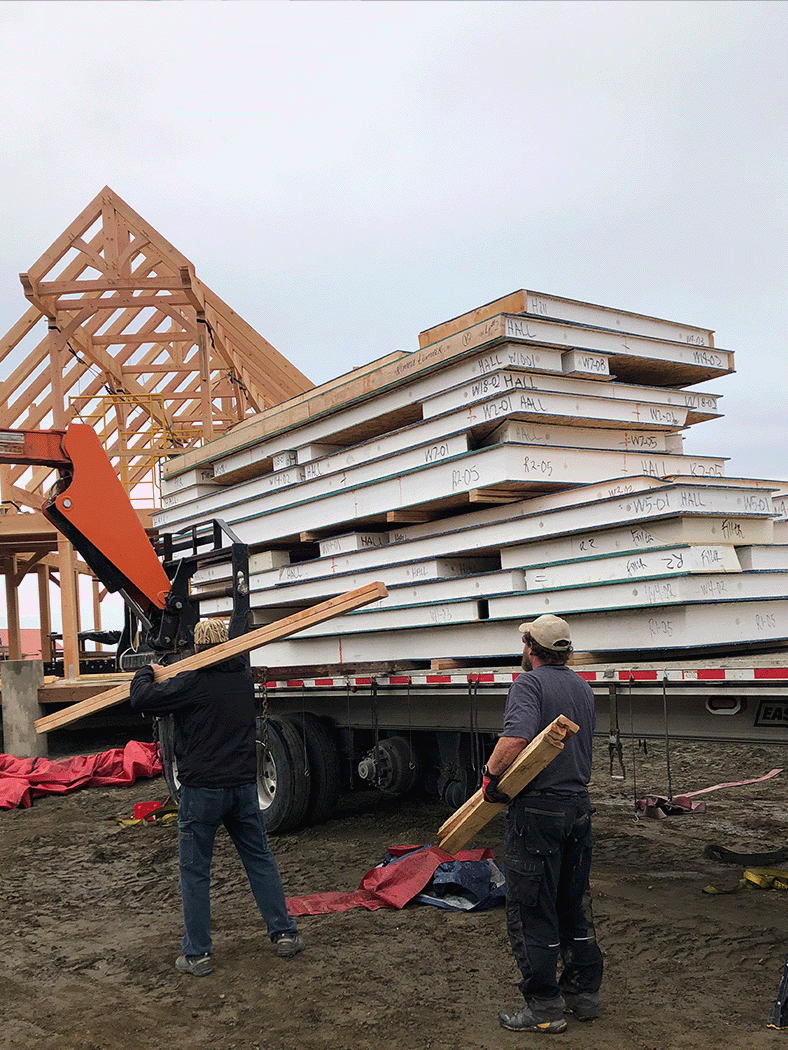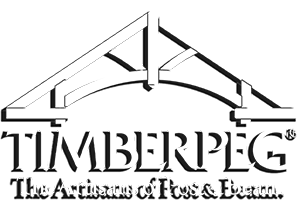Properly constructed, your new Timberpeg® home will be energy efficient and tight. The combination of continuous envelope insulation, either structural insulated panels (SIPs) or a built-up vented insulation system (“Wrap & Strap”) will result in a house that has very few air leaks and will be easily heated and cooled. For this reason, it is important to include controlled ventilation in your HVAC plans. If the house is in negative pressure, or if there is a large temperature differential between the inside conditioned space of your home and the outside, air will be drawn into the house. However, where and how much enters is by chance, and on a still day, there may not be enough fresh air provided. Moreover, exhaust fans, such as those commonly installed in bathrooms and kitchens, can only work properly if they have sufficient make-up air. There are three basic strategies for providing this air. Exhaust only systems rely on the bath and kitchen exhausts to expel warm air and use a passive air inlet to provide fresh make-up air. The incoming air is not conditioned, but the inlet usually has a mechanical flapper so that if air is not needed, the opening is closed. This system works best with baseboard hot water heating or radiant heating systems, and it is important that all internal combustion devices have sealed combustion and their own fresh air supplies. Another system is balanced ventilation. This consists of a central exhaust unit with two fans, or fans and a heat exchanger, and requires separate ducting. The advantage of this system is that the same amount of air is brought in as is exhausted, avoiding either negative or positive pressure in the home. In cold climates either a Heat Recovery Ventilator (HRV) or Energy Recovery Ventilator (ERV) can be used. In both cases the warm interior air gives off latent heat to the incoming cold air, thereby saving energy. With the ERV, water vapor is transferred as well, which adds humidity to the interior of the home. Houses tend to dry out in heating climates during the winter because the incoming fresh air is very dry; additional humidity helps keep the interior level between 35 and 50%, which is optimum for health and the suppression of bacterial growth. Finally, there are forced hot air heating and cooling systems. These are ducted, providing either heating or cooling depending upon the season, and integrate ventilation with the distribution and return of air. Unfortunately, the additional humidity can only be added with a ducted heating system, so ERV’s are most commonly found in the South, where air conditioning is needed. In the North, which is primarily a heating climate, the HRV is more often used. The proposed LEED for Homes requires no more than seven air changes per hour in IECC zones 1-5, and five in the warmer zones 6-8. Additional points are awarded for as few as three air changes per hour. This measurement tends to penalize small houses, so another measure is to allocate fresh air with at least 7.5 cubic feet per minute per occupant plus 1.0 cubic foot per minute per 100 square feet of floor space. In a typical three-bedroom house, a fan running continuously at 100 cfm will provide this. But as we have seen above, there must be an equal amount of fresh air for the fan to work. Installing an air-to-air HRV will provide this, saving energy and improving indoor comfort. Be sure to ask your heating subcontractor about make-up air and HRV or ERV units. No longer exotic, they work well. Two potential sources are Fantech and Venmar, a Canadian company. You can also check with the Energy Star program in your area, which is operated as a public utility by the local power company. In many cases, they will provide free consultations, and even do blower door tests to determine how airtight your house is. Saving energy also saves money and provides comfort, and you deserve the best of both in your new Timberpeg® home. – By Jonathan S. Vincent, LEED Accredited Professional Contact Timberpeg to learn more about ventilating your custom timber frame home.
Ventilating Your Timberpeg Home

